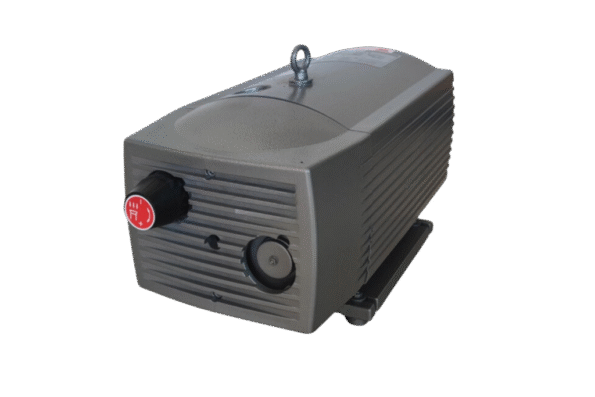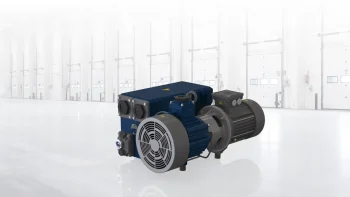Rotary vane pumps stand out as sturdy devices in numerous sectors, tackling jobs from production lines to air conditioning systems. These pumps excel in their effectiveness and resilience, but they demand ongoing attention to remain at peak performance and hold up through the years. Consistent servicing wards off abrupt stops and trims costs on fixes or new units. This article lays out hands-on suggestions for properly caring for a rotary vane pump, ensuring it stays functional and reliable over long periods.
Why Upkeep Counts for Rotary Vane Pumps
Rotary vane pumps operate by turning vanes that create a vacuum or move liquids. The configuration features elements that shift without pause, causing slow degradation. Skipping care routines can lead to problems such as contaminated lubricants, frayed vanes, or excessive heat, which reduce productivity and require costly repairs. On the flip side, a pump well cared for delivers reliable results, requires fewer breaks, and lasts far longer. Establishing simple habits safeguards the pump’s stability and enhances its overall durability.
1. Frequent Oil Reviews and Switches
Lubricant is a crucial part of rotary vane pumps, providing lubrication, reducing friction, and assisting with tight seals for superior vacuum performance. Impurities such as specks, moisture, or leftover material can accumulate in the lubricant, disrupting operations.
- Scrutinise Lubricant Volumes: Go over the lubricant amount each month or per the pump handbook. Too little lubricant can lead to overheating and damage to internal components.
- Evaluate Lubricant State: Look for signs of contamination, such as hazy or shadowed lubricant. A grimy or charred-odour lubricant indicates a change is due.
- Pick a Suitable Lubricant: Go with a top-grade lubricant approved by Mechvac Technology for the specific version. Using the wrong lubricant might weaken performance or cause harm.
- Carry Out Routine Lubricant Replacements: Replace the lubricant every 500 to 1,000 hours of use or every 3 to 6 months, depending on usage intensity. Follow the maker’s schedule exactly.
Helpful Tip: Keep a maintenance journal to track lubricant changes and encourage consistency.
2. Scrutinise and Exchange Vanes as Required
Vanes hold a central position in rotary vane pumps by shaping the vacuum. These elements wear away from continual scraping against the pump’s inner walls.
- Hunt for Degradation: During regular examinations, look for breaks, nicks, or severe erosion on vanes. Impaired vanes decrease vacuum power and overload the pump.
- Switch Vanes Quickly: Replace eroded vanes at once to avoid issues with additional components. Choose real alternatives matched to the precise pump kind.
- Abide by Maker Directions: Refer to the pump handbook for recommended vane-switch timelines, usually every 1 to 2 years for pumps under heavy load.
Ongoing vane assessments block unexpected breakdowns and uphold top pump productivity.
3. Maintain Pump Cleanliness
Buildups of grime, powder, and debris on the pump’s outer and inner surfaces can obstruct cooling and affect output. A pristine pump works more fluidly and keeps cooler.
- Clean the External Area: Use a soft, dry material to remove dust and dirt from the pump shell. Bypass water or potent solvents that could wound the pump.
- Examine Air Screens: Many rotary vane pumps come with air screens to stop powder intrusion. Purify or replace these screens frequently for proper airflow.
- Verify the Entrance: Ensure the pump entrance is free of debris that could be drawn in and cause injury.
A clean pump reduces the risk of overheating and maintains consistent output.
4. Observe Running Warmth Degrees
Rotary vane pumps generate heat during operation, but extreme heat can damage components and degrade lubricant quality.
- Guard Against Excessive Warmth: Sense the pump shell while in use. Abnormal heat could indicate an overload, poor airflow, or insufficient lubricant.
- Guarantee Sufficient Air Circulation: Set the pump in a spacious zone with ample area for air to move. Shun narrow or boxed spots.
- Add Cooling Tools: In hot environments, consider adding blowers or barriers, as proposed by Mechvac Technology.
Sustaining secure warmth degrees prevents hasty breakdown and stretches the pump’s utility.
5. Heed Unusual Tones
Odd sounds such as scraping, banging, or shrieking frequently hint at budding issues.
- Run Audio Checks: Tune in to the pump while it works. A stable, uniform tone is standard, but alterations point to likely matters.
- Explore Without Delay: When strange tones appear, pause the pump and look for slack parts, frayed vanes, or inadequate lubricant. Correct the concern before starting again.
Spotting troubles early through hearing checks can halt major injury.

6. Confirm Seals and Linings
Seals and linings aid in keeping vacuum wholeness and stopping escapes in the pump. Contact with heat, force, or other materials can gradually erode them.
- Scan for Escapes: Hunt for lubricant trickles or vacuum force falls, which might signify defective seals or linings.
- Exchange as Needed: Replace damaged seals or linings with new parts that match the pump model.
- Plan Ongoing Reviews: Incorporate examinations of seals and linings into the care routine, generally every 6 to 12 months.
Seals and linings ensure the pump performs well without leaks.
7. Stick to a Care Timeline
Uniformity is vital for extending a rotary vane pump’s lifespan. Build a timeline matched to the pump’s activity and producer proposals.
- Everyday Examinations: Review lubricant volumes, listen for irregular tones, and monitor temperature.
- Weekly Duties: Inspect air screens and clean the external area.
- Monthly Probes: Judge lubricant condition, vanes, and seals for harm or erosion.
- Annual Review: Execute a complete check, swapping worn pieces and switching lubricant if pending.
An organised timeline assures every care job gets notice.
8. Steer Clear of Pump Overburden
Running a rotary vane pump beyond its limits accelerates erosion and shortens its lifespan.
- Grasp Capacity Edges: Check the handbook for highest pressure and amount. Remain inside these guidelines.
- Supervise Load Scenarios: Verify the pump fits the planned application. Overburden pressures the engine and vanes.
- Select Proper Dimensions: Opt for a pump that matches the task’s needs to avoid additional pressure.
Operating within edges boosts longevity and proficiency.
9. Keep the Pump Right During Downtime
For periods of inactivity, proper storage protects the pump from harm and prepares it for upcoming use.
- Remove the Lubricant: Empty old lubricant to block tainting or corrosion in storage.
- Purify Fully: Clear away powder, bits, or lubricant remains from the pump.
- Choose a Dry Keeping Place: Position the pump in a chilled, humidity-free location to avert rust.
- Shield with a Wrap: Use a guard to defend from powder and fragments.
Appropriate keeping preserves the pump’s condition in idle phases.
10. Turn to Maker Help for Guidance
For tricky matters or significant repairs, reach out to Mechvac Technology for expert guidance. Using genuine parts and following the manufacturer’s guidelines, keep the pump in top condition.
- Go for Real Pieces: Pick alternatives made for the particular pump type.
- Consult the Handbook: The producer’s handbook supplies exact guidance tailored to the pump.
- Connect for Support: In cases of doubt about care or problems, link with assistance personnel.
Specialist advice sidesteps blunders and prolongs the pump’s duration.
Conclusion
A rotary vane pump is a valuable resource, and proper maintenance ensures reliable operation for many years. Via steady lubricant reviews, vane checks, cleaning initiatives, and an established care plan, the pump’s span can expand notably. These direct methods evade costly corrections, reduce pauses, and confirm seamless activities. Commitment to upkeep turns a rotary vane pump from Mechvac Technology into an enduring, dependable element in any arrangement.







